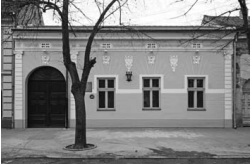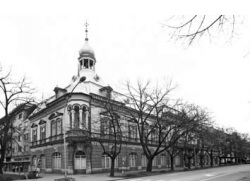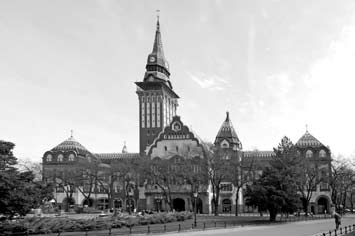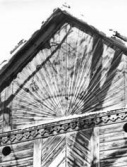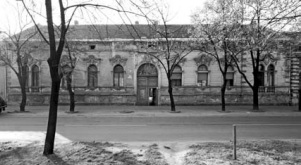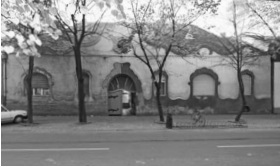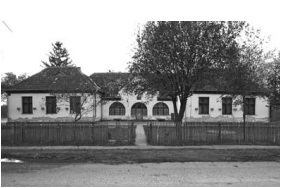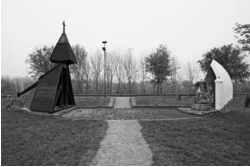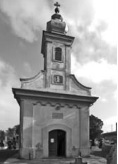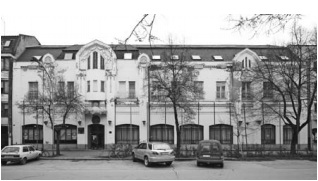The writer Stevan Sremac was born in Senta on November 23, 1855. in house no. 4, in the street that today carries his name. Sremac has a prominent place in Serbian literature. Through literary works, he gave a kind of picture of the social circumstances of the Serbian Palaeo life in Vojvodina in the north, through Belgrade, to Nis in […]
Прочитај више
The building was erected in 1909 according to the projects of architect BERENZENCZEY DOMONKOS, who designed the building of the Gymnasium in Senta. The building contractor was SZÁRICH GEZA elected in 1908 at the time of the GOZON ISTVÁNA pleban. Plebania’s premises were designed on the first floor, while the ground floor was intended for commercial space. In 1911, the […]
Прочитај више
The town house was designed in 1907, built 1908/10. but due to works on the interior furnishings it was finally finished in 1912 as an extraordinary example of the synthesis of architecture and art crafts, a monument of one time. This huge building dominates the center of Subotica. In spite of the Art Nouveau wall paintings, the silent rhythm of […]
Прочитај више
The house was built at the turn of the XIX and XX centuries. In the monograph of the Bač-Bodroška County, issued in 1909, the type of the house with a sunglass is called Senjenski. Furthermore, on typical projects, made in 1906, they are falling off the boards, and the forms are far simpler. After 1914, sunbaths were no longer built. […]
Прочитај више
At the time of designing and building his family house in Senta 1896/97. The architect Vladimir Nikolic was already off by the construction of a representative Patriarchal Palace in Sremski Karlovci (built in 1892/93). After staying in Vienna for studies, a nine-year work at the Ministry of Construction in Belgrade and moving to Sremski Karlovci in early 1892, due to […]
Прочитај више
Building in Ađanska Street (Leninova) no. 10 until 1977 was owned by the descendants of Krste Slavnić, or sisters Vojislav and Aleksandra, born. Slavnić, and since August 8, 1978, the building has been divided into four parts owned by the families: Ciric (Uros) Lazar, Vasa Vince and Peter Karolja, who are still owners of this facility. According to the words […]
Прочитај више
School in the Kevi farmstead settlement was erected in 1912 according to a typical project signed by Ćula Švab, architect from the technical department of the Hungarian Ministry of Culture and Education. This was the second state school built in the village for which the land, as well as the first one, was donated by the Bilicki family. The building […]
Прочитај више
At the end of the 17th century there was a weakening of the Turkish state. The Sultan wanted to regain the status of great power by attacking Vienna. Christian Europe could not allow the fall of the capital of the Habsburg Monarchy and the penetration of the Turks deep into the continent. To this end, the alliance of the Papal […]
Прочитај више
The chapel is dedicated to St. Archangel Gabriel and located in the northeastern part of the Orthodox graveyard in Senta, east-west. The chapel was built by Jakov Kragujević in 1868 as a significance to his son Milan, who died in the 1848 revolution. It was built in a neo-baroque style, approximately a square base, with a polygonal apse in the […]
Прочитај више
The “Hotel Royal” building is set up by a central facade towards the main city park. According to the old Sagan architect Ferenc Vartus, the building was hoisted around 1908, at the site of the old mound “Magyar Király” because he was the author of the MAGYAR EDE project (1877-1912). a segregated architect who worked in a number of buildings […]
Прочитај више
